Table of Contents
Dragon fruit has gained much fame for its superfood status. In doing so, it has crossed paths with foodies and health-conscious people alike. Though you might not be living in the tropics, getting your hands on this exotic fruit is becoming easier. So what exactly is this bright red scaly fruit, and what are its powers? See if the dragon fruit will be your next fruit in a shining arm as we peel back its scaly skin.
What exactly is a dragon fruit?
Dragon fruit is a very unique, exotic-looking tropical fruit from Central America. It’s also known as pitaya, pitahaya, or strawberry pear. Not many people may know this, but dragon fruits are from a type of cactus plant, or to be exact, the Hylocereus cactus.
Don’t be intimidated by its looks! Dragon fruit tastes similar to other fruits. Some say it’s a mix of kiwi and pear with a hint of sweetness.
Unique as they are, dragon fruits come in a few varieties. Red dragon fruit has bright red skin with green, dragon-like scales—hence the name. It has white or red flesh with black seeds.
There’s also a less common yellow dragon fruit with yellow skin, white flesh, and black seeds.
Dragon fruit nutrition
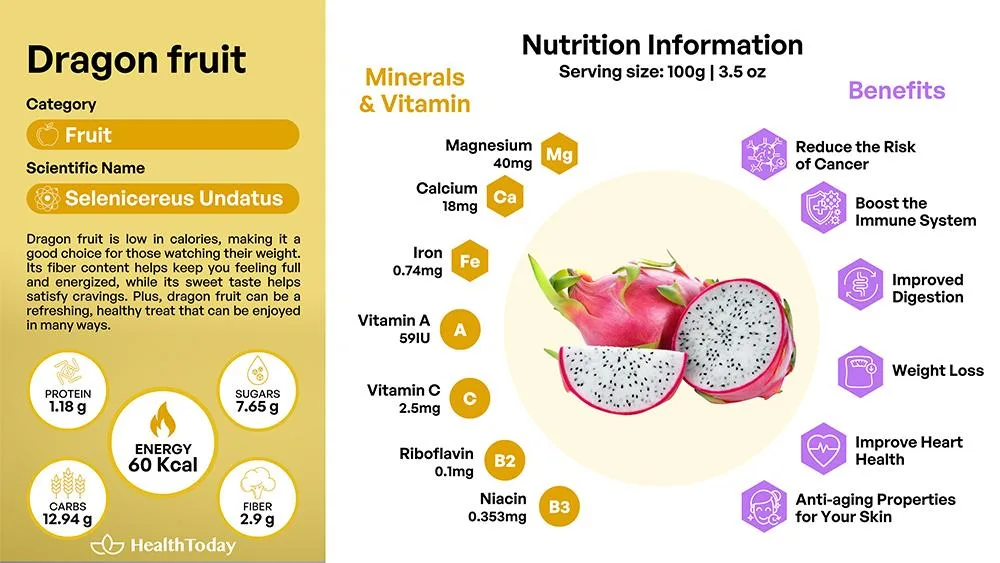
Dragon fruit is a low-calorie fruit comparatively high in nutrients. It’s also a good source of minerals and antioxidants.
A small to medium-sized fruit can weigh around 450 grams with the skin. Without the skin, you get close to 300 grams of edible pulp. For a small fruit, you’ll get maybe 200 grams.
Here are the key nutritional values per 100 grams of dragon fruit (1):
- Calories: 60 kcal
- Carbohydrates: 12.94 g
- Dietary Fiber: 2.9 g
- Protein: 1.18 g
- Total Fat: 0 g
- Calcium: 18 mg
- Iron: 0.74 mg
- Magnesium: 40 mg
- Vitamin C: 2.5 mg
Besides these essential nutrients, dragon fruits also contain beneficial bioactive components, such as betalains, betacyanin, polyphenols, and carotenoids (2, 3). Read more to find out what these are.
Dragon fruit’s health benefits
Thanks to its fiber, vitamins, and antioxidants, dragon fruit packs a few punches with health benefits. Although this tropical fruit isn’t a magical cure for all issues, much research has backed its growing reputation in health and wellness.
Here are ten phenomenal health benefits of dragon fruit:
1. Helps improve digestive health
Eating dragon fruit can help improve your gut and digestive health. Oligosaccharide, a dietary fiber, and betacyanins contained in the fruit act as prebiotics.
These stimulate the growth of beneficial bacteria, especially lactobacilli and bifidobacteria (4, 5). The risk of constipation and bowel infection can be reduced as a result of consuming dragon fruit regularly.
3. Boosts immune system
Your immune system can be strengthened by eating the right foods, and dragon fruit is a good choice. It contains antioxidants like vitamin C and carotenoids that help to optimize immunity, thus reducing infection (6, 7). Carotenoid antioxidants also scavenge out free radicals and protect immune cells (7).
4. Helps control blood sugar
Dragon fruit has the potential to decrease blood sugar levels as it is a low-glycemic food. Low glycemic diets can help normalize sugar levels in type 2 diabetes or impaired insulin resistance (8). Other than that, foods containing high dietary fiber, such as dragon fruit, also help in maintaining blood sugar levels (9).
5. Supports heart health
Dragon fruit, or strawberry pear, is also recommended for heart disease (10). It improves heart health due to its quercetin content (11). Moreover, this amazing benefit also comes from quercetin’s ability to lower blood cholesterol (12).
Dragon fruit seeds are high in polyunsaturated fats (omega-3 and omega-6 fatty acids). These can help maintain blood cholesterol (13).
Dietary fiber and vitamin E in dragon fruit likewise help to decrease blood cholesterol levels via digestive metabolism (14).
6. Aids in weight management
Fiber is one thing that can help you lose weight, and dragon fruit is rich in fiber. More fiber in your diet makes you feel fuller or reduces appetite. Fiber has other properties, such as decreasing protein and fat digestibility which results in more fat being excreted in stool (15, 16).
7. Promotes healthy skin and hair
Skin and hair health can be affected by the food you eat. Once again, dragon fruit’s antioxidants come into play. Vitamin C, polyphenols, carotenoids, and betalains all promote healthy skin and hair in two ways. They increase collagen formulation and decrease enzyme activity that damages the skin and hair (17, 18).
8. May help prevent cancer
There are many cancer-causing factors, such as cellular damage from free radicals. One known cancer-preventative is antioxidant-rich food (19).
As already mentioned, dragon fruit has several powerful antioxidants with anti-cancer properties. These neutralize free radicals and inhibit the formation of toxic compounds (20).
9. Benefits bone health
Dragon fruit is rich in minerals—especially magnesium which is particularly good for improving bone strength. Therefore, low levels are often associated with osteoporosis (21). Magnesium is also essential in promoting bone metabolism and tissue formation (22).
10. Helps prevent anemia
Anemia, caused by low hemoglobin concentrations, commonly affects women around the world.
Consuming iron-rich food, such as dragon fruit (8% of RDV), is an important yet simple solution because iron assists hemoglobin production (23). Moreover, the high vitamin C content in dragon fruit, which promotes iron absorption, also helps prevent anemia (24).
Find out more also about chia seeds as one of the super healthy foods worth trying.
Easy and healthy dragon fruit recipes
Dragon fruit can, of course, be enjoyed as is it. But they can also be made into fun and exciting refreshments. Red dragon fruit, or other varieties, go well in fruit salads, smoothies, jams, or even in salsa.
Here are two famous easy-to-make dragon fruit recipes:
Dragon fruit smoothie
Do not be fooled by how simple this ‘strawberry pear’ recipe is. You’ll be surprised by its complex, fun flavors and refreshing taste.
Ingredients:
- frozen dragon fruit
- Frozen mango cubes to taste
- banana
- any type of milk
- ice cubes
- lime juice
Instructions:
- Add ingredients in order starting with frozen fruits, into a blender.
- Blend on high speed into a creamy, frothy, pink smoothie.
- If too thin, add some fresh or frozen dragon fruit.
- Serve with a pinch of freeze-dried raspberries, toasted coconut, or a lime slice.
Dragon fruit pudding
Another fun option to try out is making a pudding instead! This recipe transforms the dragon fruit and changes its texture whilst keeping the flavor.
Ingredients:
- 3 cups water
- 1 cup dragon fruit
- 1 cup evaporated milk
- ¾ cup sugar and cornstarch
- 1 tsp vanilla extract
Instructions:
- Set aside the pulp of the fruit.
- Mix the evaporated milk and water, rising to medium heat.
- Add cornstarch and sugar to the mix and completely dissolve.
- Add the vanilla extract and the dragon fruit.
- Stir while cooking until the mixture thickens.
- Turn off the heat and transfer the pudding to a container.
- Allow to cool before serving.
1. Can dragon fruit be eaten daily?
Dragon fruit is low in calories and high in nutrients. There are no adverse effects from eating even a whole fruit every day, making it a perfect snack-buddy.
2. Why is dragon fruit considered a superfood?
Dragon fruit is a so-called superfood because of its rich nutrient content such as high fiber, plentiful antioxidants, vitamins, minerals, and healthy fatty acids. From these are derived various its various health benefits.
3. Is it OK to eat dragon fruit raw?
Yes, it is best eaten raw, like any fruit, to maintain its beneficial nutritional content. However, dragon fruit can also be grilled (as in fruit kebabs!) or processed in different ways. Red dragon fruit or yellow dragon fruit can be eaten in the same way.
4. Do you refrigerate dragon fruit?
Unripe dragon fruit is usually stored at room temperature. However, once ripe, you can store it in the refrigerator for around five to seven days. That, or cut it up into cubes and freeze it for making smoothies.
5. Should I wash dragon fruit before eating it?
There is no need to wash the dragon fruit since you peel it out of the protective skin. However, it is safer to wash before cutting or to cut under running water since it can easily absorb germs or microbes.
6. How do you tell if a dragon fruit is ripe?
Ripe dragon fruit has an evenly bright skin color. It should be quite soft when squeezed, similar to avocado. If it’s too hard, then it is not yet ripe, and too soft means it’s overripe.
7. Can you eat dragon fruit seeds?
Yes, dragon fruit seeds are perfectly edible, and they even have some health benefits. You eat the seeds along with the pulp. They have a crunchy texture that contrasts with the juicy pulp.
8. Who should not eat dragon fruit?
Although dragon fruit is considered safe and healthy for most groups of people, there are rare cases of allergies. In two reported cases, a couple of women suffered symptoms such as swelling of the tongue and vomiting.
9. Where does dragon fruit come from?
Dragon fruit is native to Central America, especially around southern Mexico, where it is called ‘pitaya’. Nowadays, the fruit is mostly grown in Asia, with Vietnam being the top producer.
10. Why is dragon fruit called strawberry pear?
Dragon fruit has a similar taste and texture to pear. The pink skin of the fruit as well as the red or pink flesh, are also reasons why it has this name.
Summary
Dragon fruit is rich in nutrients with many health benefits. Its high fiber content helps improve digestion and control blood sugar levels. It can further support heart health and better weight management. Antioxidants in this tropical fruit are also good for healthy skin and hair, reducing cancer risks, boosting immunity, and helping to prevent anemia.







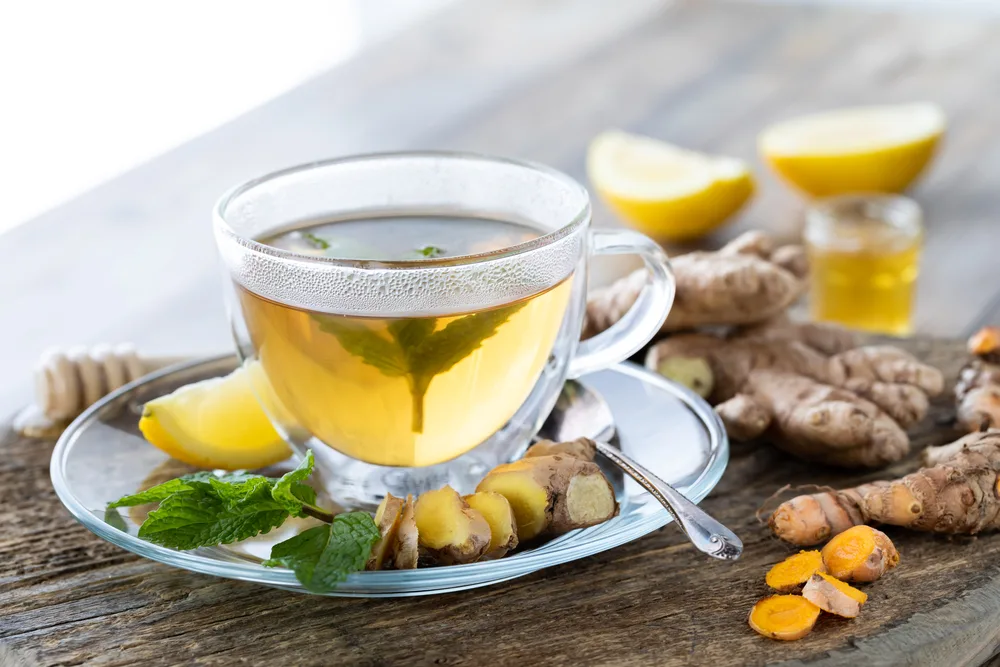


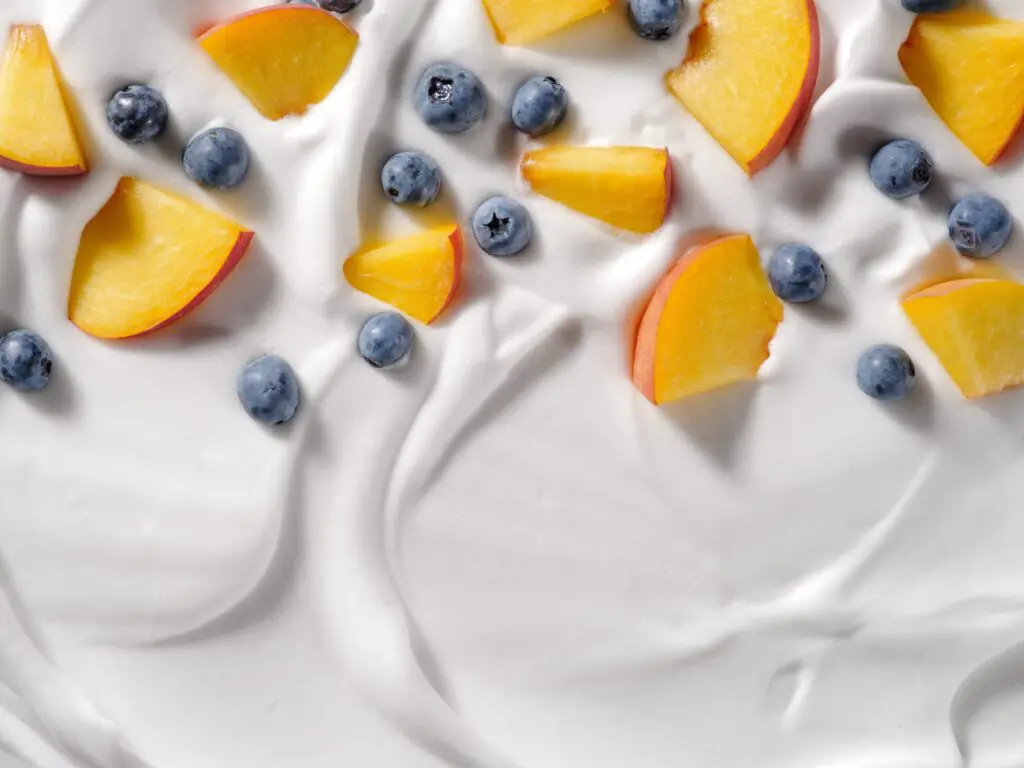


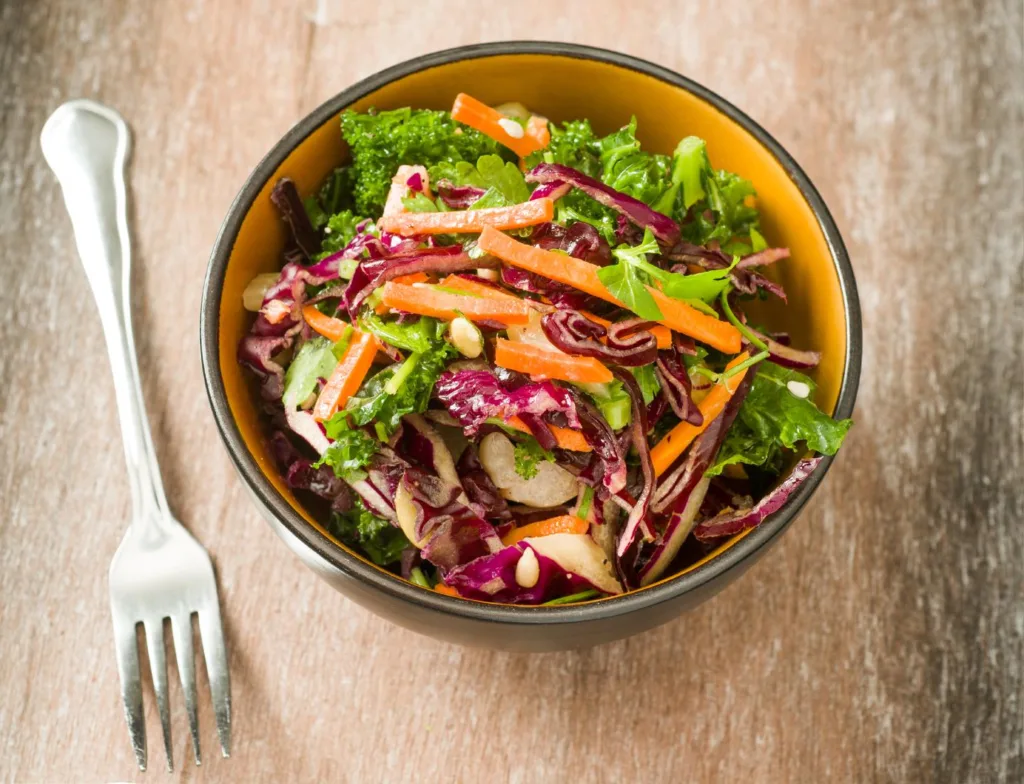
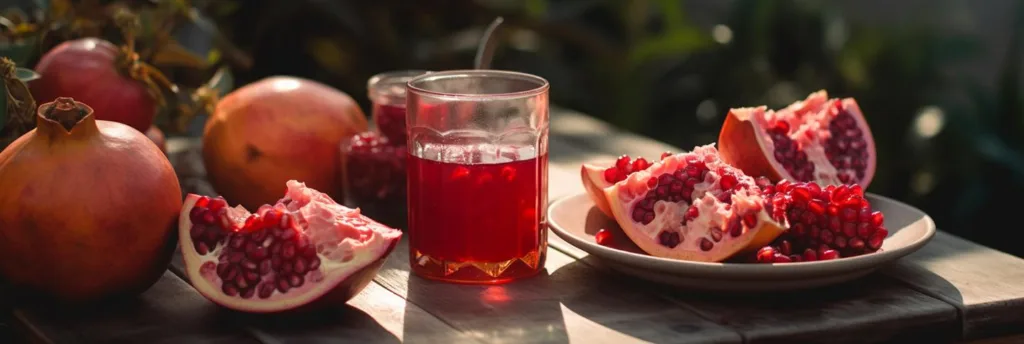


Comments
0